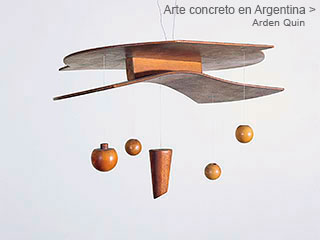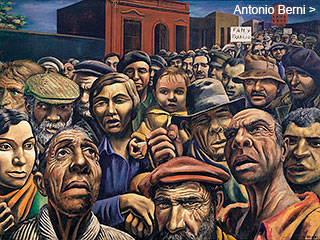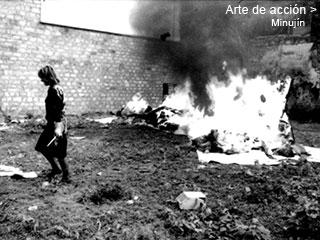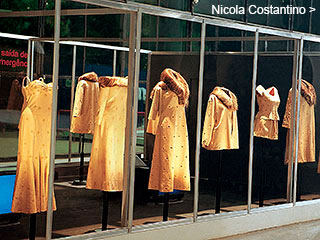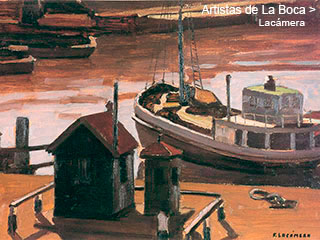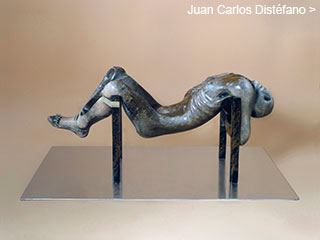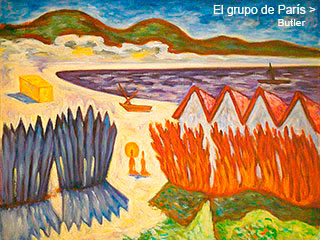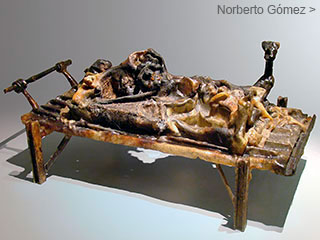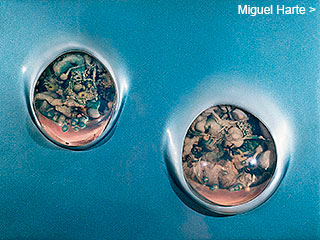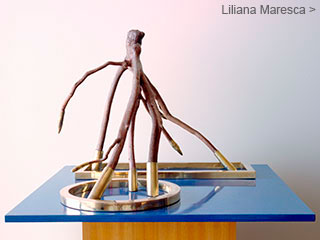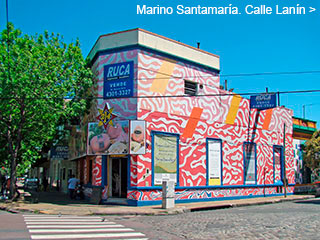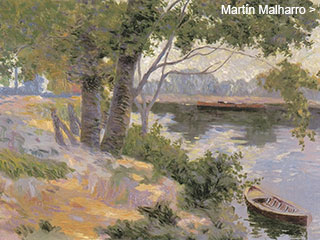Menú
Algunos dossiers
Juan Carlos
Distéfano
Distéfano
by
Adriana Lauria and Enrique Llambías
January 2003
January 2003
The dossier on Juan Carlos Distéfano spans from the time of his beginnings
as a painter to his recent works as a sculptor, a first for the CVAA. It covers
over forty years of his work and his commitment to art and reality. A special section offers a view on his work as a graphic designer, which he carried out mostly at the Di Tella Institute.
as a painter to his recent works as a sculptor, a first for the CVAA. It covers
over forty years of his work and his commitment to art and reality. A special section offers a view on his work as a graphic designer, which he carried out mostly at the Di Tella Institute.
1998
There, before the image of San Pedro in the fresco of Tribute, he felt as though the weight of a body can take on the shape of a solid construction, still on a painting. But, most probably, [...] one of the most powerful images in the history of art must have revealed itself to him in that place: Adam and Eve, expelled from Paradise. The biblical episode, a paradigmatic image of beginnings of the quattrocento transformed in an anticipation of the modern tragedy: the man abandoned to his fate, a torn being, with no rest.
It is possible that some of the recurring themes of his work, which would reach a climax in 1975, had their origin here: ascent, fall and the absence of rest. The myth of Icarus, not in his triumphant take off towards the sun but in his failed flight, and also the shrunk being that hug the earth like sacred mongrels. Distéfano’s figures evoke that fatal lapse that will offer no calm, over and over. Naked before the world and before themselves, in their infinite paleness, his creatures seem, however, committed to escape those forces that propel them down.” 
Together with Alberto Heredia and Raúl Lozza he is nominated for the Premio Leonardo to a body of work awarded by the Museo Nacional de Bellas Artes.


